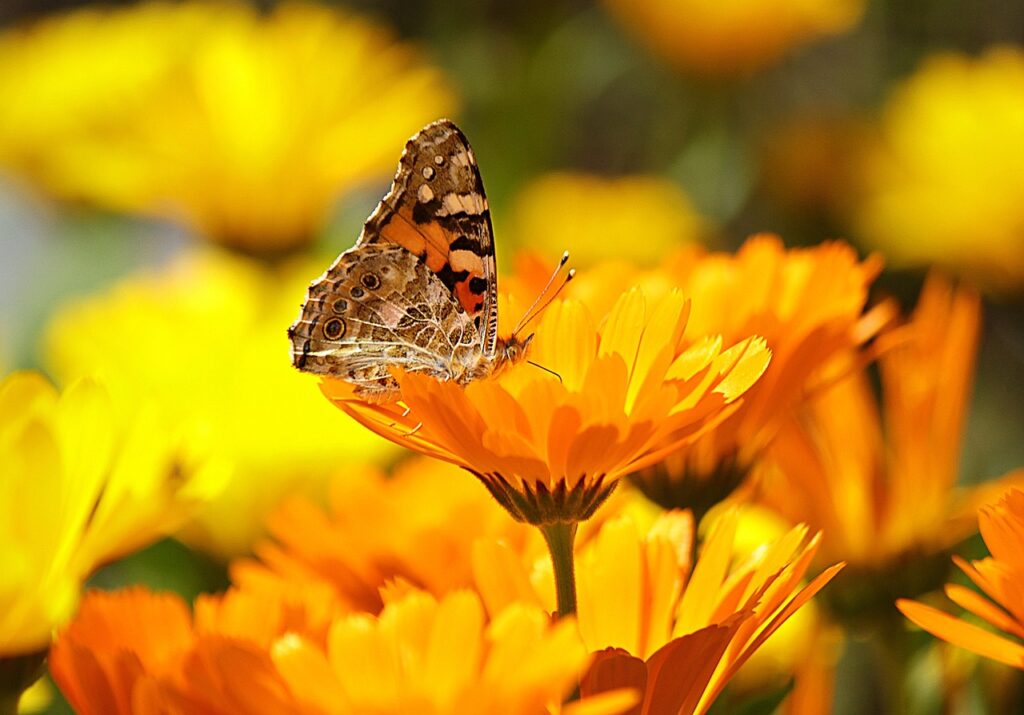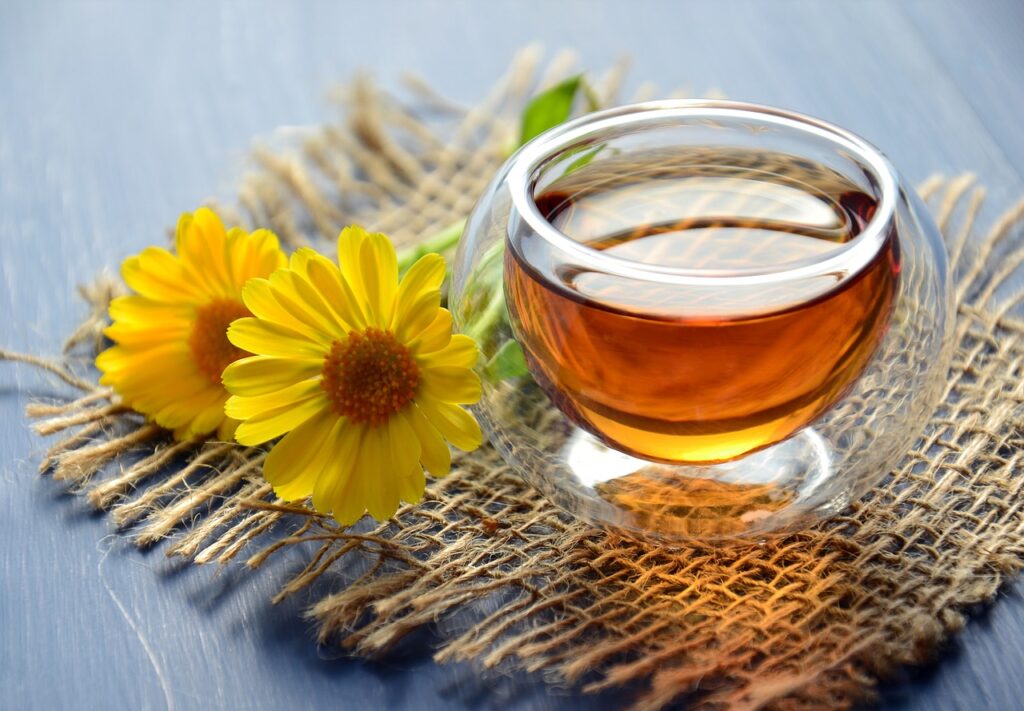Hey pollinators! It’s the new year, and with that comes new ideas to implement. YAY!! Today I starting a new series called “Intro to Herbs” where I introduce you to different botanical allies that are out there to help you grow and heal naturally and holistically.
Calendula A Must-Have in Your Home Garden
So to start this brand new series off, I want to introduce you to the little powerhouse flower known as Calendula. Officially named Calendula officinalis, and sometimes referred to as pot marigold, this daisy-like, yellow-orange flower known for its medicinal benefits for the body and skin has been around since Antiquity.
What is Calendula?
Native to the Mediterranean region, the distinctly cheerful petals of the Calendula flower range from yellow to orange depending on the variety. In the past and even up to present times, it can be found in most home gardens because of its array of medicinal and culinary uses. Its prolific self-seeding nature allows for an ever-plentiful harvest. Calendula’s bright sunny petals were even used to dye textiles. As one would hope, the produced dye tones mimic the petals of the flower from which it is extracted.
The Health Benefits of Calendula
The key components that make Calendula a powerful healing botanical are three naturally occurring ingredients called triterpenoids, carotenoids, and flavonoids. Triterpenoids are components that naturally reduce inflammation and promote skin healing. Carotenoids and Flavonoids are antioxidants that protect from stress and damage and support skin health.
On top of being rich in antioxidants and anti-inflammatory powers, Calendula petals have been shown to hold antibacterial and antifungal properties. Thus leading the Calendula flower to, not only be a source of culinary delights but also an integral staple of the home’s medical cabinet as well.
Please use your own self-guidance before starting any new ideology or theory. In other words, use your own self-judgment on whether or not it is safe for you to use Calendula or Calendula products. Always consult a licensed medical provider if you need medical assistance. My advice does not supersede medical care, and should be discussed with your healthcare provider.
Uses of Calendula
People have used Calendula as a topical skin healing ingredient dating back to the 12th century. From treating skin conditions like eczema and psoriasis to healing wounds and minor burns, such as sunburn, Calendula has been utilized in salves and balms to promote healing and hydration of the skin. Studies have shown that by encouraging the production of collagen and new blood vessels, Calendula has been shown to help stimulate tissue regeneration which assists the skin in the healing process and promotes faster healing time.
Teas and tinctures, anyone?
Through tinctures and teas, Calendula’s healing benefits can be utilized on the inside of our body, not just the outside. Used not only as a natural digestive remedy for heartburn and mild digestive issues, people have brewed teas to treat symptoms of PMS such as cramping and balancing menstrual cycles as well. Daily ingestion of Calendula can promote one’s immune system and help support one’s overall internal health.
Self care to incorporate Calendula into your daily routine.
The calendula petals can be used fresh or dried depending on how you want to use them. For example, fresh petals are great for brewing a soothing pot of tea, but not so great for making a tincture or oil infusion. Dried petals are best for these methods as the high water content of the fresh herbs can ruin the oil with bacterial growth and mold. I learned this lesson the hard way, unfortunately. R.I.P rosemary oil. 😢
Pixie Tip🧚♀️- For an alcoholic based tincture, use fresh herbs that have wilted for a day. This will help to remove some of the excess water, and you still get the goodness of the fresh herb.
Here in my garden, I haven’t had the best luck at growing Calendula, so I have bought from outside sources. But my hope is one day have rows and rows of the beautiful yellow-orange tufts filling my space. So it’s definitely on the 2025 garden grow list. In the mean time, I have ordered from a supplier and have had positive results. The petals came as expected, and worked perfectly for what I purposed them for.
Safety first, yall…
You can’t get any more natural than Mother Nature, but there is such a thing as an allergic reaction. So if you know you are allergic to the Asteraceae/Compositae family, which includes other plants like chamomile, ragweed, daisies, marigolds, and chrysanthemums, please be cautious of Calendula and Calendula products and consult a medical professional. Always patch-test new topical products to make sure they agree with your body.
Alright yall! I hope I have given you the courage to go out and get to know for yourself all the wonderful benefits of this bright-petaled flower known as Calendula. By adding it to your daily routine, even in the smallest of ways, you are opening your world to Mother Nature’s healing ways. Don’t be afraid to try new things. Just remember, there are many options out there when it comes to health and wellness, and you have the power to steer your journey the way you want it to go.


